Chinese Traditional Culture Museum: New landmark on Beijing's central axis
2022-01-27Introduction
The Chinese Traditional Culture Museum, with a building area of 91,126 square meters and six floors above ground, is located on the northern extension of Beijing's central axis.
The museum has the Olympic Forest Park to its west and the Museum of the Communist Party of China to its east. It is adjacent to the China Science and Technology Museum in the north and features the Chinese Academy of History and the "Bird's Nest" National Stadium in the south.
A winding dragon-shaped water system runs through the area, linking ecology, technology, culture and Olympic themes, forming a new cultural hub.
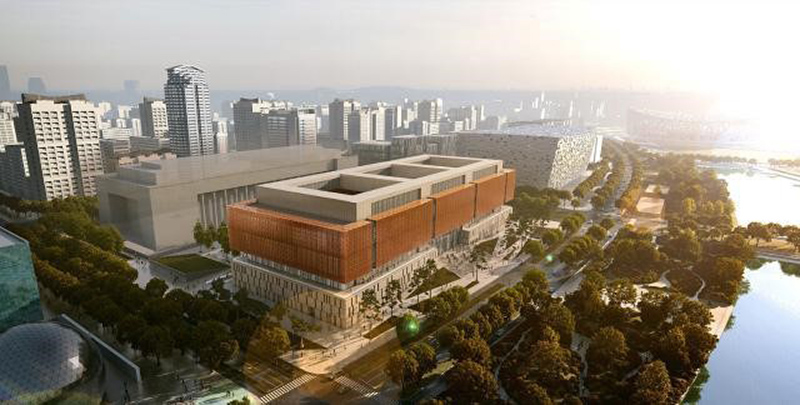
Aerial view from the northwest of the museum
Functions
As a national-level cultural hall showcasing China's outstanding traditional culture, the museum is primarily responsible for the protection, identification, restoration and development of Chinese arts and crafts and intangible cultural heritage projects, as well as the collection and exhibition of cultural relics and art treasures.
Additionally, it engages in scientific research, domestic and international academic exchanges, public education and social services, dedicated to inheriting Chinese civilization and promoting the excellent cultural heritage of various Chinese ethnic groups.
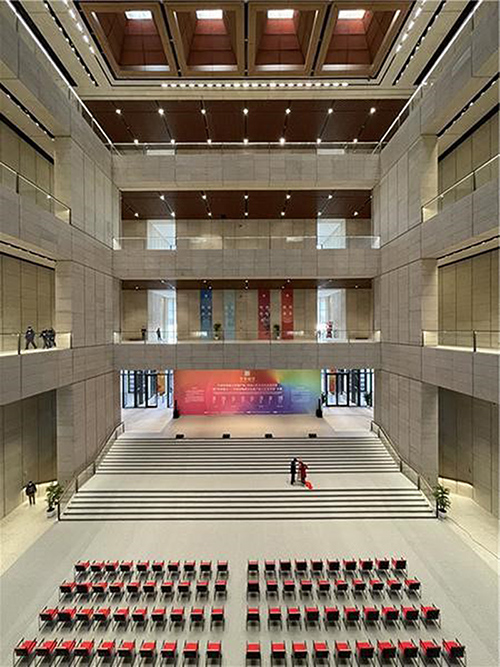
Central Hall
Construction background
Since the 18th National Congress of the CPC, the central government has placed great emphasis on the protection of intangible cultural heritage and the inheritance and development of Chinese arts and crafts. It is against this backdrop that the museum was established.
From the groundbreaking ceremony on March 30, 2019, to the official opening on Feb 5, 2022, the construction took nearly three years. More than 12,800 stone slabs, 2,674 glass panels and 1,450 metal grilles were used, and through the concerted efforts of many, a museum combining the beauty of traditional Chinese architecture with modern intelligence emerged.
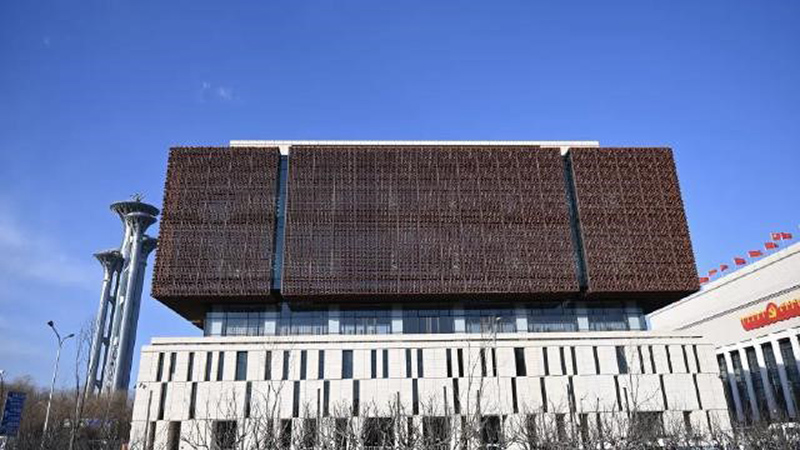
Visitor's view from the south
Unique design reflecting traditional architectural beauty
The design concept of the Chinese Traditional Culture Museum is rooted in the deep exploration and refinement of traditional Chinese culture. The overall architectural design draws inspiration from the proportions of the Hall of Supreme Harmony in classical Chinese architecture.
The building's layout is symmetrically arranged along a central axis, reflecting the aesthetic of symmetry in traditional Chinese architecture. The facade of the building is divided into three sections: a stone base, a transparent platform layer and a floating architectural layer from bottom to top, respectively representing heaven, earth and humanity in traditional Chinese culture. This design embodies the harmonious beauty of traditional Chinese architecture.
Suspended 'Treasure Cabinet'
The design of the museum goes beyond the traditional three-section style, innovatively extending the top two floors six meters outward, creating a suspended shape inspired by the traditional Chinese treasure cabinet and symbolizing the internal collection and display of national art treasures. The museum will showcase intangible cultural heritage and arts and crafts masterpieces through dynamic and static displays.
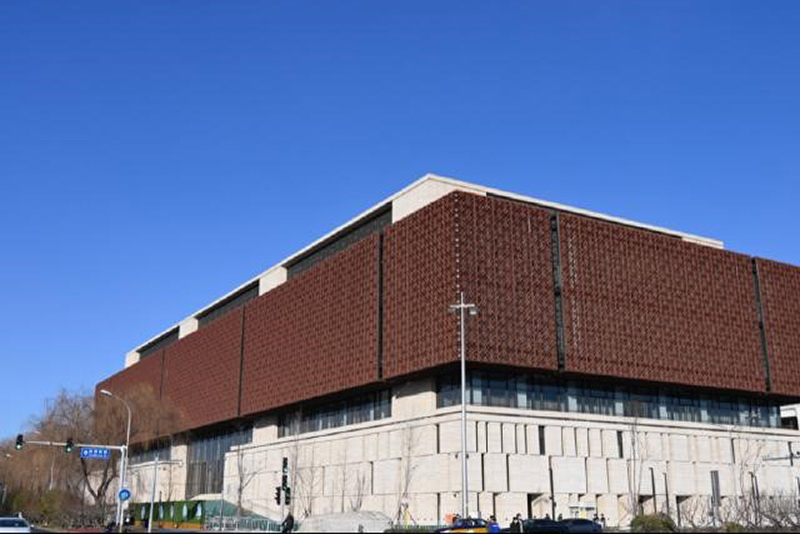
Visitor's view from the southwest
Dynamic beauty of light and shadow
The museum's exterior features a warm copper-colored curtain wall, with patterns inspired by traditional Chinese architectural lattice windows and treasure cabinets. The abstract refinement of these traditional patterns creates a unique, innovative texture with arts and crafts characteristics. This metal grille decoration effectively shades the interior while naturally presenting lively light and shadow changes, making the entire building appear dynamic and vibrant.
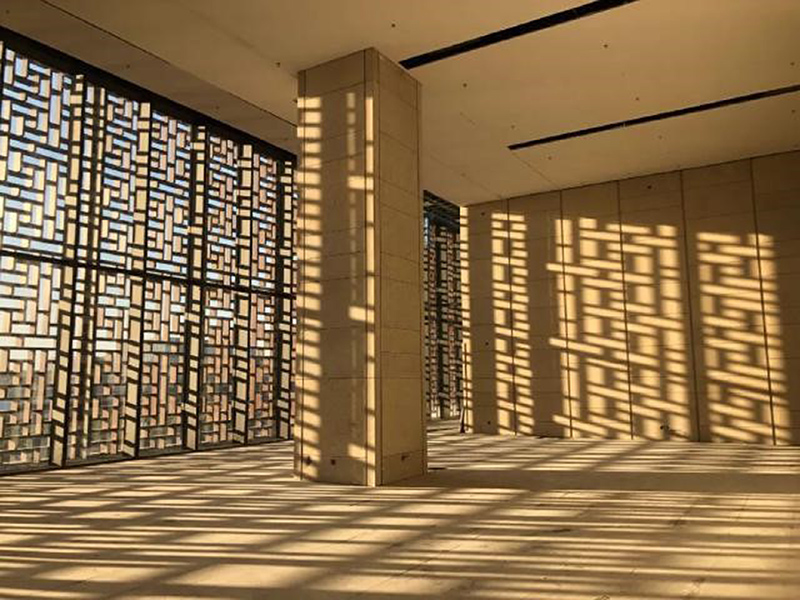
South exhibition hall on the fifth floor
Ancient charm of traditional theater stages
The multifunctional hall of the museum hosts a traditional theater stage, blending the characteristics of Beijing and Ganpai (Jiangxi-style) theaters. The stage roof follows the Beijing style with three-tiered eaves and gently upturned corners, while the ridge decorations adopt traditional cultural elements.
The architectural components and paintwork reflect the Ganpai's ancient theaters, with vivid carvings and a red, black and gold color scheme, highlighting grandeur and magnificence.
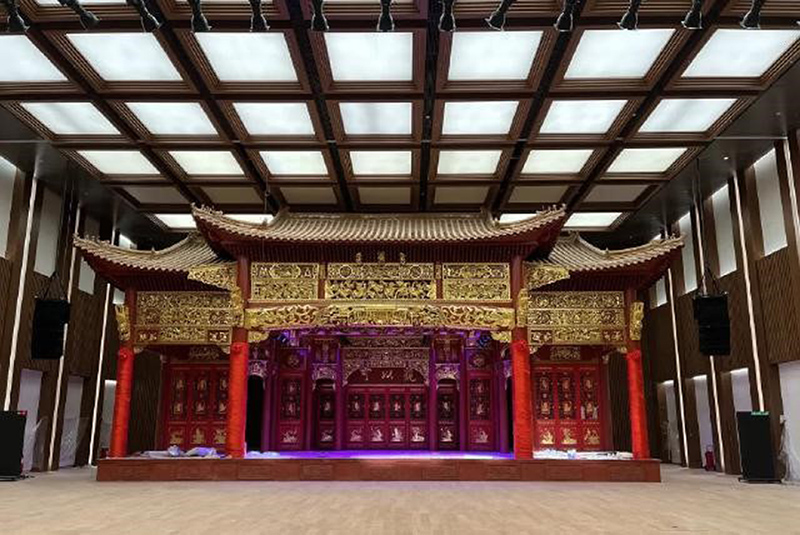
Traditional theater stage
Modern technology enhances a smart museum
The museum not only highlights traditional design concepts, but also serves as a typical example for modernity. Adhering to the "people-oriented" philosophy, it features characteristics such as environmental protection, sustainability, energy efficiency, safety, modernization and smart technology.
Modern design emphasizes green harmony
Located in the natural oxygen bar of the Olympic Forest Park, the museum emphasizes a "green and harmonious" design concept. The interior features a fresh air system with multifunctional environmental detectors to monitor indoor air quality and adjust air conditioning and ventilation accordingly. Unlike most museums, the fourth floor has a large outdoor circular terrace for visitors to relax and enjoy the scenic views of the Olympic Forest Park and surrounding cultural hub.
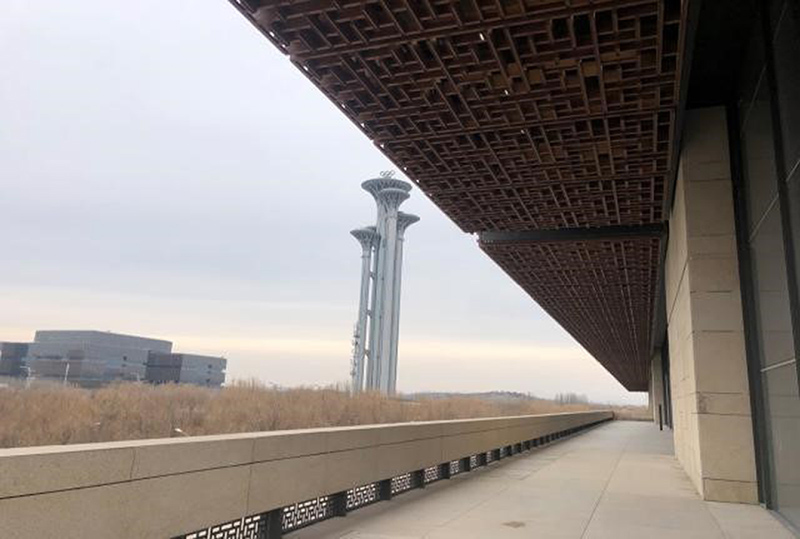
View from the circular terrace on the west side
AI ensuring safety
The museum' security systems are technologically advanced, incorporating AI-based large-scale security systems with intelligent recognition and automatic tracking to eliminate external security threats. These systems can also analyze air samples to detect potential fire hazards early. AI technology is used extensively, with facial recognition cameras identifying potential dangers and improving security management efficiency.

Integrated management platform of the museum
Information technology supports a smart museum
Information technology integration prevents departmental information silos. The management center can monitor personnel, collections, exhibits and equipment information on a single screen. Data sharing enables coordinated operation and unified management of security, fire protection, equipment and lighting systems.
The museum is equipped with sensors and data collectors for personnel, environmental, energy and equipment operation information, laying the foundation for smart construction. An intelligent lighting system with efficient LED sources reduces energy consumption, and the DALY dimming system in exhibition halls and theaters adjusts to different lighting needs. At night, the museum glows with a unique charm, highlighted by a "touch of Chinese red”, creating a warm cultural and artistic atmosphere.
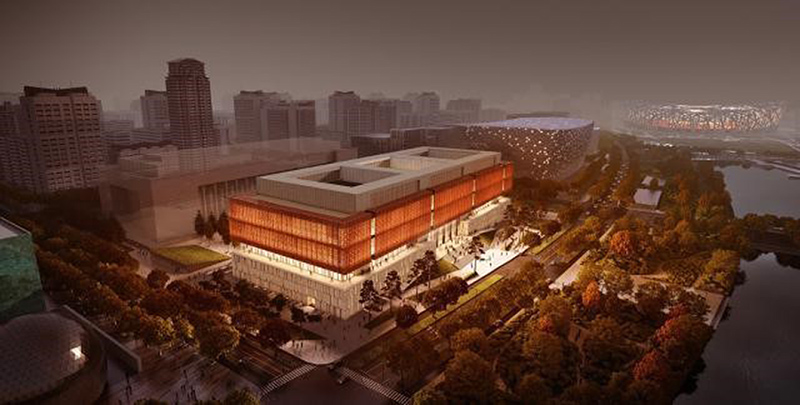
Aerial view from the northwest (night scene)
Conclusion
As the highest-profile hall for collecting and displaying China's arts and crafts and intangible cultural heritage, the museum will become an important window for boosting the excellent culture of the Chinese nation, enhancing the influence of Chinese culture and forging new cultural brilliance.

 News
News  News
News 

